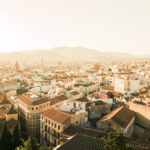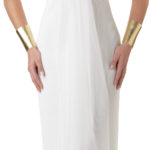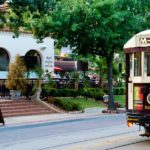
How You Can Eat Correctly in Cantabria (and all of those other country):
- Watch what individuals are eating surrounding you to make certain you’re eating the restaurant’s specialities. If you notice people eating calamares (known as rabas in Cantabria) order it. If you notice them getting stew, check it out. Ask exactly what the specials are. And should you not like a specific item, don’t sit lower – find elsewhere.
- Never be afraid to inquire about questions. If you notice a pot of hot herby alcohol likely to another table when you are out for any meal – ask what it’s. You may be given an example. (The herby drink is really a tea with Puerto herbs offered with Orujo liquer…)
- Translations in British aren’t always as useful as they may be or might not be offered at all. Should you not understand something on menu, request clarification
- Keep to the local timetable for the greatest food. It’s really useful to change your own eating routine to local occasions whether that’s inside a village or perhaps in a Michelin-star venue
Know Where You Stand in Cantabria
Just like Spanish cuisine is quite different from one region to another – Cantabria cuisine differs from place to place. You shouldn’t expect vast arrays of fresh sea food within the Picos de Europa mountain range, nor in the event you anticipate finding wild boar stews within the restaurants around the coast.
Across The Shoreline, you need to try…
- Rabas or calamares (squid) are often breaded or battered
- Cachon (cuttlefish) or chipirones (squid) cooked in the ink
- Caracolillos (periwinkles) are occasionally eaten having a wine or vermouth before lunch
- Mussels or salpicon de marisco that is a medley of sea food in a vinaigrette
- Crabs are tricky for any novice but they are the most popular starter. Try the maseras that are frequently available in the weekends.
- Bonito del Norte is really a Northern tuna. While in season, you’ll think it is grilled, BBQd and stewed. From season, you’ll think it is preserved in essential olive oil – and put into a salad or offered with chilled roasted red peppers.
- Fresh sardines known as boquerones – are grilled or battered
- Preserved anchovies in salads, on tapas, or by themselves. Scrumptious with goat’s cheese on the dry bread. Santona is how the anchovies are preserved. You won’t look for a better anchovy.
- If you are wondering what’s the most costly item – it’s percebes (barnacles) that are highly coveted in Cantabria and therefore are billed through the kilo.
Visit
- The Mercado en Esperanza in Santander (or other grocery store around the coast). This is where you’ll get the best choice of artisan produce. Downstairs for fish. Upstairs for cheeses, fruit and cured meats. While round the shops, look out for that new gin distilled in Torrelavega known as Siderit – excellent.
- A food producer. Or perhaps a wine producer. We loved our recent private tasting in the Bodegas Vidular in Voto. Your wine is wonderful and also the views in the winery result in the trip special. Should you arrange a tapas tasting or book lunch, you won’t be sorry!
- Foodie occasions like the Anchovy Festival in Santona where top chefs prepare their favourite anchovy recipes (and showcase a little) . Also think about the non-foodie festivals which frequently possess a food element – e.g. the huge open-air fresh sardine BBQ for Dia del Carmen in Puertochico, Santander
Resourse: http://totallyspaintravel.com/2013/10/25/cantabria-cuisine/







